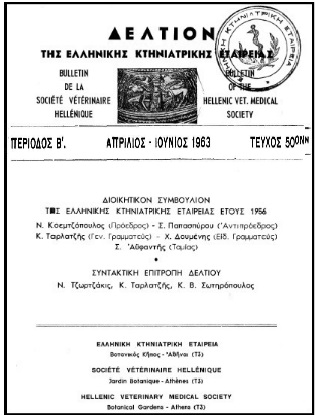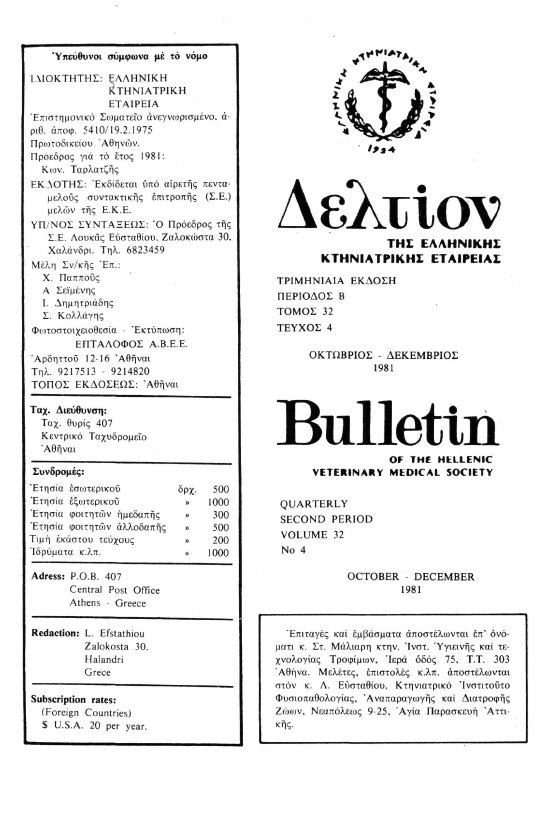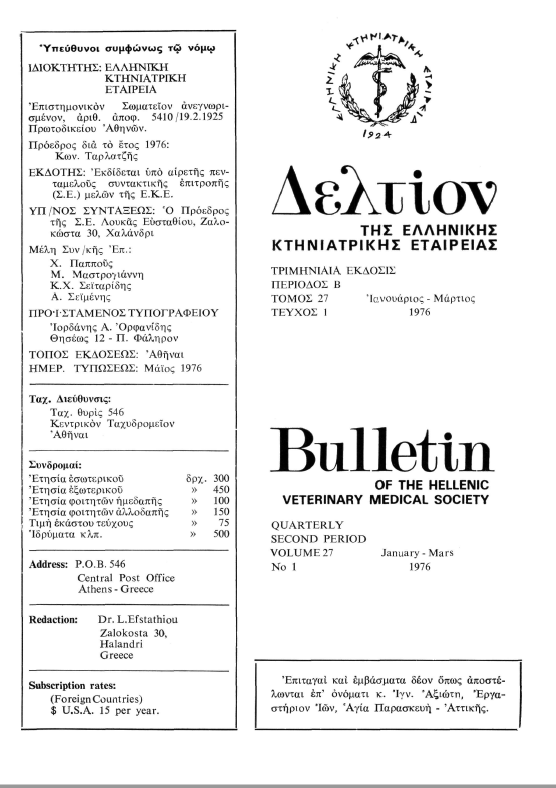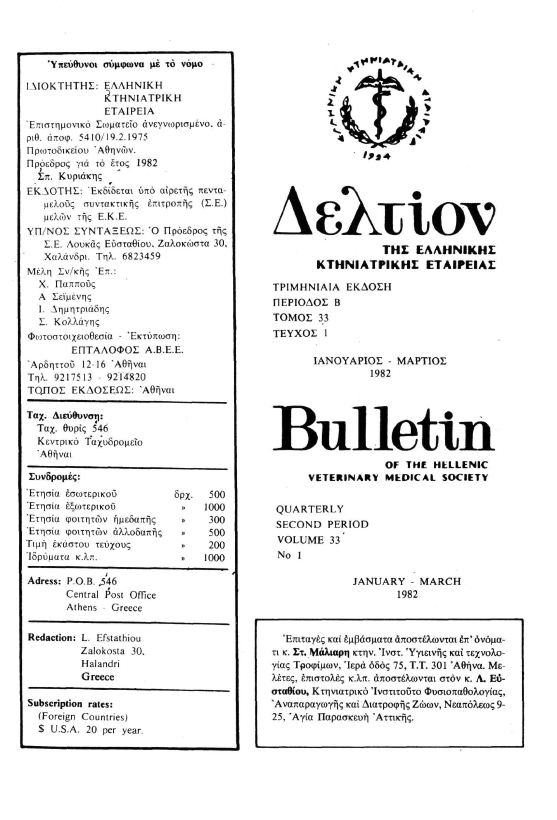Oestrus synchronization in cows and heifers with PGF2 a
Abstract
A total of 38 cows and 19 heifers (Brown Swiss crosses and of the Sykia breed) were synchronized for oestrus by means of two forms of prostaglandin. These animals were divided into groups Al, A2 of 18 cows and 9 heifers and groups Bl, B2 of 20 cows and 10 heifers, respectively. All animals of groups Al and A2 were injected with 12 mg (6 ml) Prosteron Adelco, while those of groups Bl and B2 were injected with 25 mg (5 ml) Lutalyse Upjohn. The injections of prostaglandins were repeated 11 days later, after previous palpation of the ovaries wich showed that all animals (except a heifer with atrophic ovaries) had functioning C.L.S. All animals were blindly inseminated with frozen Charolais semen 72 and 96 hrs (first synchronized oestrus) after the second prostaglandin injection. Those animals that returned to oestrus 18-20 days later (second syncronized oestrus) were inseminated twice at a 24 hr interval. Pregnancies were diagnosed by rectal palpation 2-3 months later. All animals diagnosed as pregnant calved normally at term. Of the 27 animals of group A, 19 (70.4%) conceived at the first and 20 (74.1%) at the First and second synchronized oestrus, while of the 30 animals of group B, 21 (70.0%) conceived at the first and 27 (90%) at the first and second synchronized oestrus. The difference in the final conception rate between groups A and Β was not significant. Of the 38 cows of the experiment 29 (76.3%) conceived at the first and 34 (89.5%) at the first and second synchronized oestrus, while of the 19 heifers, 11 (57.9% conceived at the first and 13 (68.4%) at the first and second synchronized oestrus. The conception rate among cows was significantly higher (P<0.05) than that among heifers. Irrespective of the age of the animals or the form of prostaglandin employed, of the 57 animals of the experiment 40 (70.2%) conceived and calved normally at the first and 47 (82.5%) at the first and second syncrhonized oestrus. The conception rate (89.5%) achieved this year in the manner described above was significantly higher (P 0.05) than that of the previous year, when of the 38 cows inseminated on the basis of oestrus observation only 25 (65.8%) of the animals calved.
Article Details
- How to Cite
-
ΤΣΑΚΑΛΩΦ Π., ΣΑΡΑΤΣΗΣ Φ., & ΠΑΠΑΜΑΡΤΖΙΒΑΝΟΣ Χ. (2019). Oestrus synchronization in cows and heifers with PGF2 a. Journal of the Hellenic Veterinary Medical Society, 33(2), 131–138. https://doi.org/10.12681/jhvms.21531
- Issue
- Vol. 33 No. 2 (1982)
- Section
- Articles

This work is licensed under a Creative Commons Attribution-NonCommercial 4.0 International License.
Authors who publish with this journal agree to the following terms:
· Authors retain copyright and grant the journal right of first publication with the work simultaneously licensed under a Creative Commons Attribution Non-Commercial License that allows others to share the work with an acknowledgement of the work's authorship and initial publication in this journal.
· Authors are able to enter into separate, additional contractual arrangements for the non-exclusive distribution of the journal's published version of the work (e.g. post it to an institutional repository or publish it in a book), with an acknowledgement of its initial publication in this journal.
· Authors are permitted and encouraged to post their work online (preferably in institutional repositories or on their website) prior to and during the submission process, as it can lead to productive exchanges, as well as earlier and greater citation of published work.








